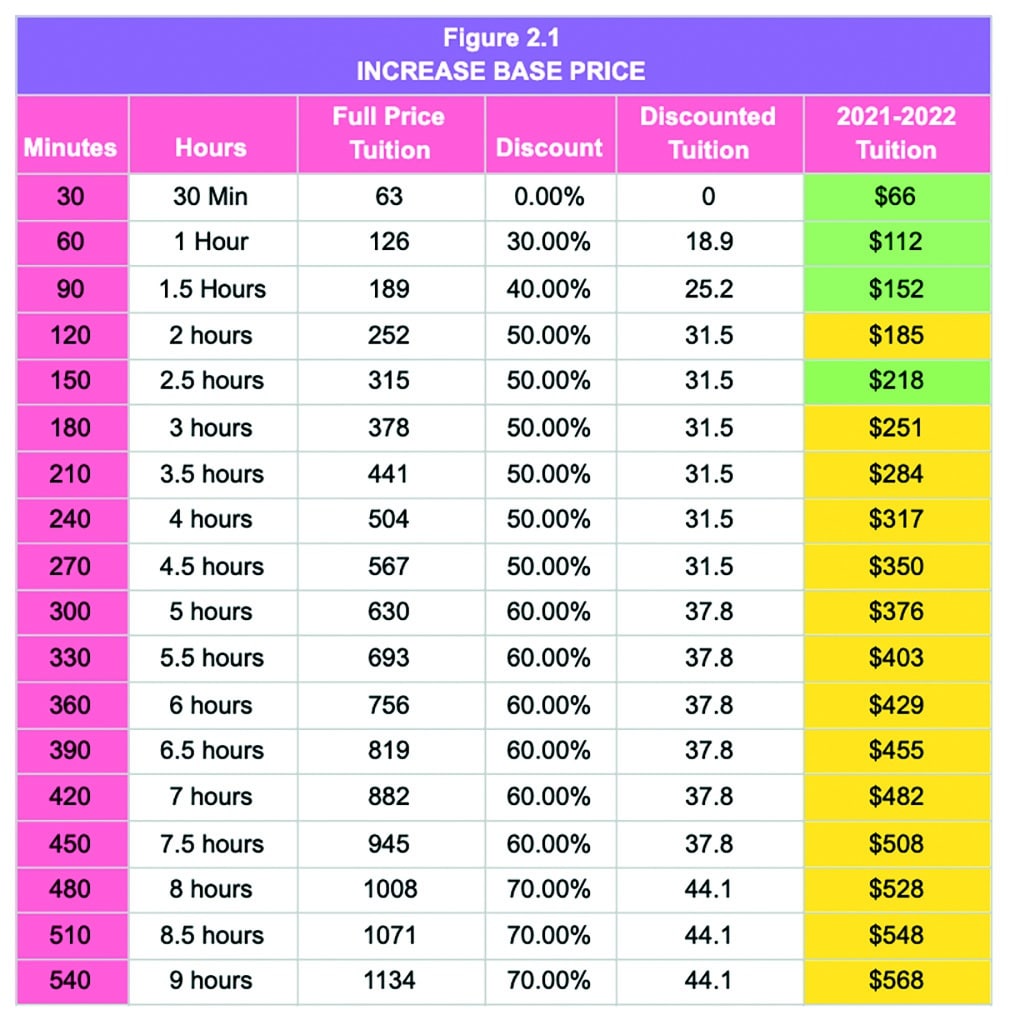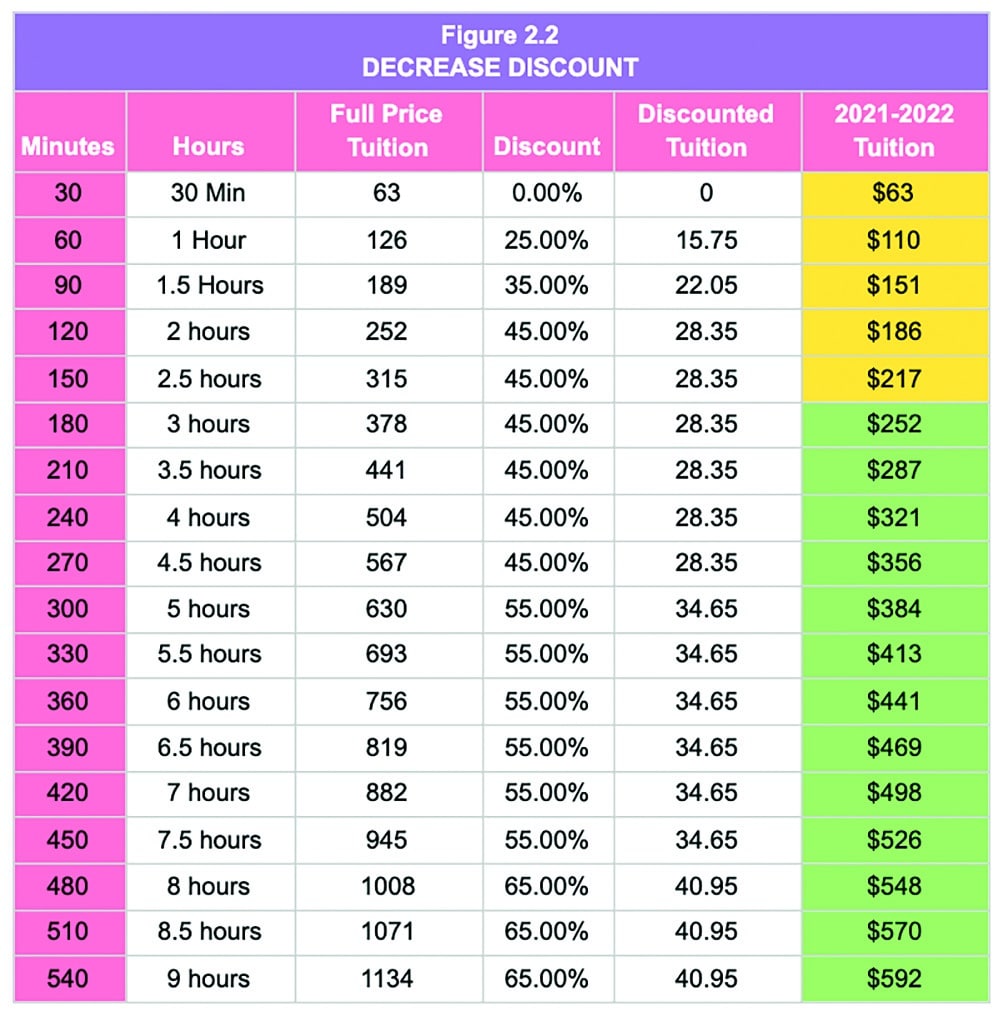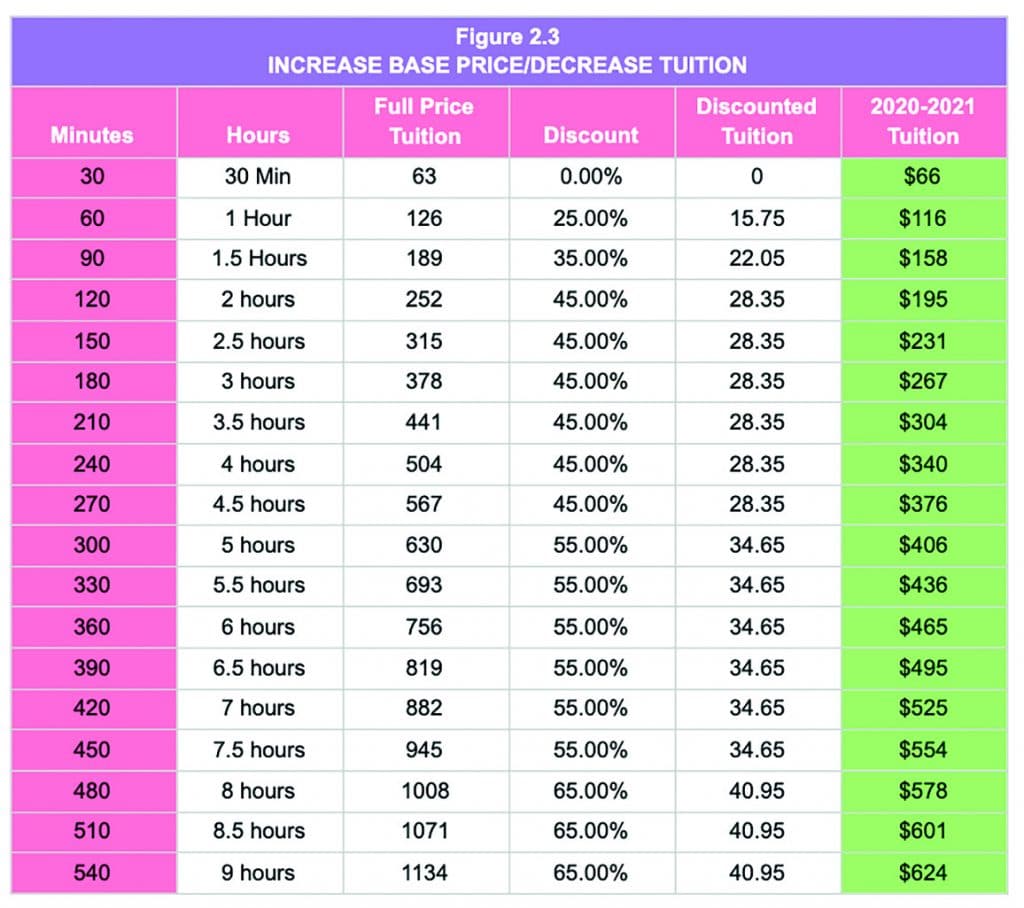Raise your hand if you’ve ever started adjusting tuition, only to immediately stop—paralyzed by indecision. Week after week you push the spreadsheets off to the side of your desk, promising yourself you’ll work on them tomorrow. Then tomorrow comes, and the endorphin-releasing, quick tasks that are easier to do take priority. Once again, tuition gets pushed to the side.
As leaders we are faced with a multitude of decisions every day, and after the tumultuous year of COVID, making decisions about tuition pricing can feel overwhelming. We hem and haw, asking ourselves, “Should I raise prices? What if my prices are higher than my competitors? Will parents think I’m taking advantage of them? Will I receive 500 angry emails?”
Sometimes no decision feels better than making a decision. Playing it safe seems like the right answer until cash flow becomes a problem and it’s too late. Then you find yourself waiting nine or ten more months before revisiting the project.
It’s time to face your fears and make the process less daunting (perhaps, dare I say, even fun!). Let’s dive into some of the methods you can use to become more confident and secure when updating your tuition prices.
Exercise 1: Figure out how many classes each student takes
Run a report using your studio software that shows how many classes (units) each student takes. Some programs will calculate this nicely for you, while others will require you to count the report by hand. Either way, this is a vital step towards making your first decision on tuition changes. Beginning your tuition investigation with this exercise will show how many students could be affected by a base tuition increase, versus reducing discounts.
In the example at right (Figure 1), your intuition might be to increase the base price, since the majority of students take just one or two classes. But intuition is not enough. It’s time to do the math!

Exercise 2: Create a tuition analysis sheet
Open a Google sheet or Excel spreadsheet and plug the following items into columns:
- Number of classes (if your tuition is based per class) or minutes/hours (if your tuition is based on a timetable)
- Current full price tuition
- Current discounts
- Total amount of tuition with discounts applied

Once you’ve entered your current season numbers simply copy and paste that table on the same page or in a new tab and start calculating different scenarios. Try:
Increasing the base rate (Figure 2.1)
Keeping the base rate, but decreasing
discounts (Figure 2.2)Increasing the base rate and decreasing the tuition (Figure 2.3)

While your inclination may be to select the one that has the biggest monetary return for your work, there are a few questions to ask yourself:
Which scenario is best for the growth of the studio?
Which scenario will your customers support?
Which scenario might cause customers to leave?

Exercise 3: Complete a SWOT analysis of your competitors
Now it’s time to dig deeper. Create an additional tab on your tuition analysis sheet and run a tuition SWOT analysis (See Figure 3) of your competitors. A SWOT analysis helps you explore strengths, weaknesses, opportunities, and threats. To do this, input the following expenses in the left hand column of your sheet:
- Registration/Membership Fees (include a column for students and another for families if your studio has more than one price)
- Private Lesson Fees
- Solo, Duo, and Trio Choreography Fees
- Class Tuition and/or Timetable Tuition
- Specialty Program Prices (such as mini-mesters)
- Classes/Genres offered
From there, type in each local studio name at the top of the spreadsheet and begin entering their prices. Be prepared to do research online or over the phone since not all studios list their pricing on their website.

From there, go back to your ideal scenario tuition increase from Exercise 2 and input those numbers into the spreadsheet. See where they land compared to the competition. Doing this allows you to see if your ideal tuition structure is competitive with your business peers. Afterwards, go through line by line and highlight in GREEN where you are lower and RED where higher. This helps you analyze the facts.
A word of caution: This exercise should not be the only factor that determines your pricing! Your expenses (rent, payroll, utilities, professional fees, etc.) are unique to your studio. While it’s wise to complete this competitor SWOT analysis, at the end of the day you have to choose a tuition scale that will cover your expenses and leave room for 15-20% net profit.
Exercise 4: Compare your prices to indirect competitors
Oftentimes, studio owners assume their prices are higher than other kids’ activities. Do yourself a favor and add a tab to your tuition analysis where you record what other local activities cost. You may find that you are charging far below industry averages. See Figure 4.

While there is no magic equation that will solve your analysis paralysis, you now have four exercises that will help you build confidence in the process! Once you know with certainty that you are charging a fair price for the services you offer, inquiries about tuition changes become less fear-driven and easier to address.
In the words of leadership and self-improvement expert Dale Carnegie, “Do the thing you fear to do and keep on doing it … that is the quickest and surest way ever yet discovered to conquer fear.”
